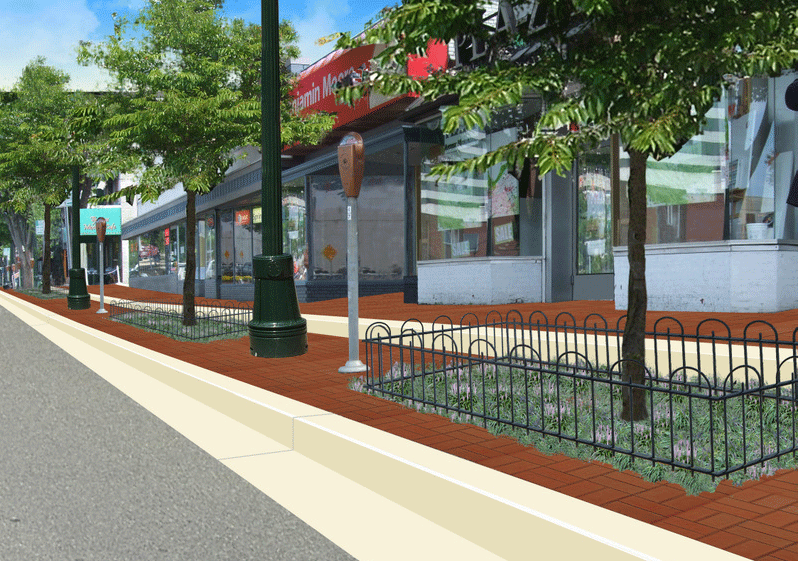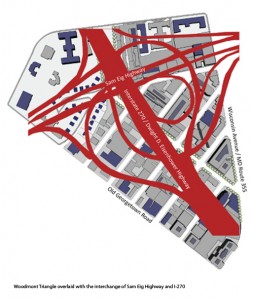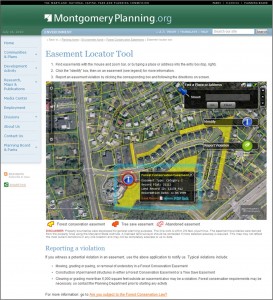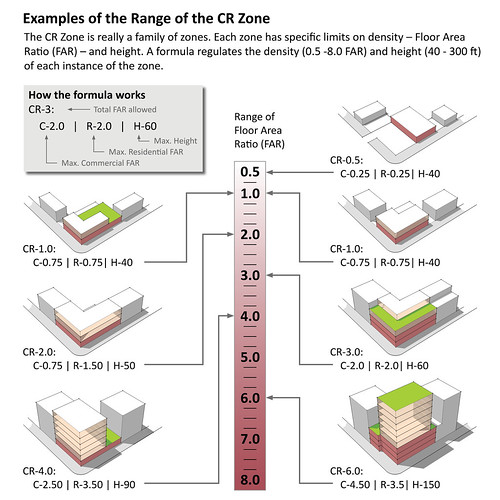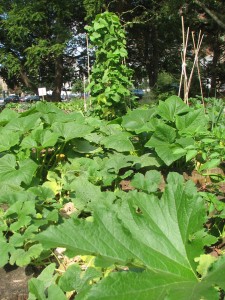
This Thursday, the Planning Board will review the County’s DHCA plans to upgrade the 25-year old streetscaping along Georgia Avenue between Selim Street and Silver Spring Avenue. The goals are to meet ADA standards and to install new soil panels that will help street trees reach full maturity.
But it’s more than a matter of setting in a few bricks and new trees. The design of the sidewalk space and its elements has to mediate among the needs of all users. Business owners want trees that don’t obscure their storefronts and signs. Curb edges and varied paving materials can hold up wheelchair users but can help blind pedestrians navigate. Agencies undertaking the work, trying to make the most out of … Continue reading
